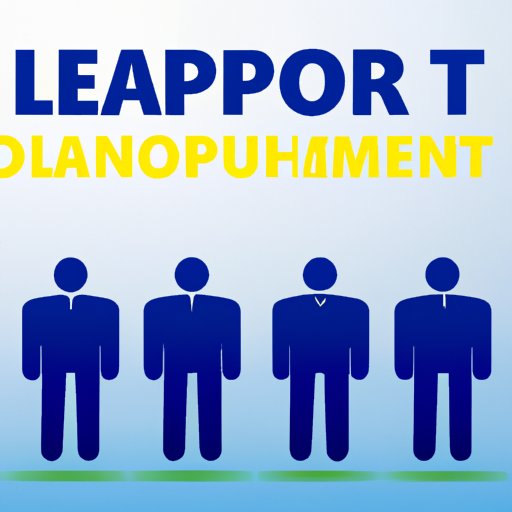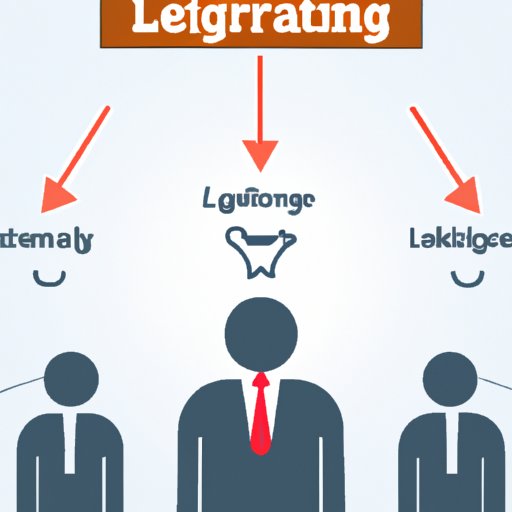Introduction
Leadership is a critical component of any successful organization. It is the responsibility of the leader to set the vision, motivate team members, and ensure that everyone is working towards the same goal. However, not all leaders are effective in their roles. Poor leadership can have serious consequences on an organization and its employees.
In this article, we will explore what is poor leadership and analyze common missteps that leaders make. We will look at various types of poor leadership and identify warning signs that indicate when it’s time for a change. We will also examine the impact of poor leadership and discuss strategies for improving leadership skills.

Analyzing Poor Leadership: A Look at Common Missteps and How to Avoid Them
Poor leadership can take many forms, from unhelpful behaviors to ineffective strategies. Leaders who fail to recognize and address these issues can have a negative impact on their team and organization. It is important for leaders to be aware of common missteps and strive for improvement.
Identifying Unhelpful Behaviors
Poor leadership often manifests itself through unhelpful behaviors. These can include micromanaging, being overly critical, or not providing enough guidance. Leaders who are too controlling can stifle creativity and prevent team members from reaching their full potential. Leaders who are too lenient can create an environment of confusion and disorganization. Both extremes can lead to inefficient processes, missed deadlines, and low morale.
Highlighting Ineffective Strategies
Another problem with poor leadership is the use of ineffective strategies. This can include relying too heavily on one person or group, failing to delegate tasks, or making decisions without consulting the team. Poorly executed strategies can lead to wasted resources, lack of direction, and a feeling of disconnect between the leader and their team.
Exploring Solutions for Improvement
The best way to address poor leadership is to identify the root cause and develop a plan for improvement. Leaders should strive to create an environment of trust and respect, where everyone feels comfortable speaking up and offering their ideas. They should also focus on developing relationships with their team and giving clear direction. By taking these steps, leaders can create an atmosphere of collaboration and success.
Types of Poor Leadership: Identifying Unsuccessful Leadership Styles
There are several different types of poor leadership styles. Each of these has its own drawbacks and can lead to negative outcomes if not managed properly. Understanding the differences between these styles can help leaders identify which areas need improvement and how to go about doing so.
Autocratic Leadership
Autocratic leadership is characterized by a top-down approach. The leader makes all decisions without consulting their team and expects everyone to follow orders without question. This type of leadership can create an atmosphere of fear and can hinder team members from expressing their ideas or concerns. It can also lead to decreased motivation and engagement.
Laissez-Faire Leadership
Laissez-faire leadership is the opposite of autocratic leadership. With this style, the leader takes a hands-off approach and allows team members to make their own decisions. While this can foster creativity and independence, it can also lead to confusion and lack of direction. Without clear expectations, team members may struggle to stay on track and complete tasks in a timely manner.
Bureaucratic Leadership
Bureaucratic leadership is focused on following rules and procedures. This type of leadership can create an environment of rigidity and inflexibility, which can be detrimental to innovation and progress. It can also lead to slow decision-making and difficulty adapting to changes.
Transformational Leadership
Transformational leadership is focused on inspiring and motivating team members. This type of leadership can create an atmosphere of collaboration and trust. However, if the leader fails to provide clear direction or properly manage expectations, this style can lead to frustration and confusion.
Warning Signs of Poor Leadership: Recognizing When It’s Time for a Change
Although some of the signs of poor leadership can be subtle, there are certain indicators that can signal when it’s time for a change. Paying attention to these warning signs can help leaders identify areas of improvement and make adjustments accordingly.
Poor Communication
One of the most obvious signs of poor leadership is poor communication. If the leader fails to provide clear direction or fails to listen to team members, it can lead to confusion and frustration. This can result in misunderstandings, missed deadlines, and a lack of trust between the leader and their team.
Unclear Goals
Another sign of poor leadership is unclear goals. Without clear objectives, team members may feel lost and uncertain about their roles. Without a sense of purpose, employees can become disengaged and unmotivated.
Low Morale
Low morale is another indicator of poor leadership. If team members are unhappy and uninspired, it can be a sign that something is wrong. Leaders should strive to create an environment of positivity and support in order to boost morale and keep employees engaged.
Lack of Accountability
Finally, a lack of accountability can be a sign of poor leadership. If the leader fails to hold team members responsible for their actions, it can lead to complacency and a lack of commitment. This can result in missed opportunities and decreased productivity.

The Impact of Poor Leadership: Examining the Effects on Employees and Organizations
Poor leadership can have lasting effects on both employees and organizations. From reduced engagement to poor performance, the consequences of poor leadership can be far-reaching and costly.
Reduced Employee Engagement
Poor leadership can lead to reduced employee engagement. If team members don’t feel supported or valued, they may become disengaged and unmotivated. This can lead to decreased productivity, absenteeism, and high turnover rates.
Poor Organizational Performance
Poor leadership can also lead to poor organizational performance. Without proper guidance and clear direction, teams can struggle to meet goals and deadlines. This can lead to missed opportunities and decreased profitability.
Negative Financial Impact
Finally, poor leadership can have a negative financial impact. Poorly managed teams can lead to increased costs and decreased revenue. This can put a strain on an organization’s budget and can lead to long-term financial problems.

Overcoming Poor Leadership: Strategies for Improving Leadership Skills
Fortunately, there are steps that leaders can take to improve their leadership skills. By understanding their role as a leader and developing effective communication skills, leaders can create an environment of trust and collaboration. Additionally, setting clear goals and expectations and providing regular feedback can help leaders foster an open and positive working environment.
Understand Your Role as a Leader
The first step to becoming a better leader is to understand your role. Leaders should strive to create an environment of trust and respect, where everyone feels comfortable speaking up and offering their ideas. It is also important for leaders to recognize their team’s strengths and weaknesses and delegate tasks accordingly.
Develop Effective Communication Skills
Effective communication is essential for successful leadership. Leaders should strive to be clear and concise when communicating with their team. They should also listen to team members and be open to feedback. By doing so, leaders can create an atmosphere of collaboration and understanding.
Foster an Open and Positive Working Environment
Leaders should also strive to create an open and positive working environment. This can be done by encouraging team members to express their ideas and concerns and by providing regular feedback. This can help team members feel valued and motivated, which can lead to improved performance.
Set Clear Goals and Expectations
Without clear goals and expectations, team members can become confused and unmotivated. Leaders should strive to set realistic and achievable goals and provide clear direction. This can help team members stay on track and work towards a common goal.
Provide Regular Feedback
Finally, leaders should provide regular feedback to their team. This can help team members understand their strengths and weaknesses and identify areas of improvement. Regular feedback can also help leaders stay informed and ensure that team members are meeting expectations.
Conclusion
Poor leadership can have serious consequences on an organization and its employees. It is important for leaders to be aware of common missteps and strive for improvement. By understanding the different types of poor leadership, recognizing warning signs, and implementing strategies for improvement, leaders can create an environment of trust and collaboration.
(Note: Is this article not meeting your expectations? Do you have knowledge or insights to share? Unlock new opportunities and expand your reach by joining our authors team. Click Registration to join us and share your expertise with our readers.)
